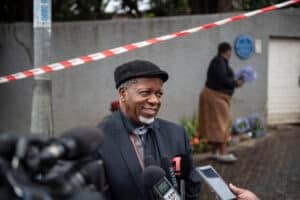Critics question ANC's Energy Action Plan (EAP) progress. Only 16% complete, raising concerns over SA's energy crisis

On Sunday, Minister of Electricity Kgosientsho Ramokgopa briefed the public on the implementation of the ANC’s Energy Action Plan (EAP).
He said of the 50 actions in the plan, eight had been completed, and 20 were on track.
EAP progress
Ramokgopa said two action points had not yet begun and eight were categorised as “off-track with an intervention needed”.
The EAP was introduced by President Cyril Ramaphosa and Ramokgopa said “about 56% of the work we are doing is either completed or on track”.
However, Ramokgopa had been at the receiving end of criticism from experts and the Democratic Alliance (DA) because over a year later, only eight out of 50 planned interventions had been achieved.
ANC cannot ‘fix SA’
The DA said: “This proves that the ANC does not have the capacity to fix South Africa’s energy crisis.”
Meanwhile, in an interview with TV channel, Newzroom Afrika, energy expert Clyde Mallinson said Ramokgopa’s claim that South Africa had lost 1 000MW from the grid due to the decommissioning of the Komati power station was “misinformation”.
He said power stations had a specific lifespan.
“Coal stations can last for 60 years, but then at 30 years, they have to have a major overhaul.
“They can then last for another period. Then they reach a cold stop date, where the guarantees of safety of maintenance on things like boiler tubes and pressure vessels expire.
“That’s when they plan to decommission the plant,” he said. “What he should have said is that we’ve lost 1 000MW over a period of time,” he said.
Government to blame
Ramokgopa also said certain government facilities were found to be consuming energy unnecessarily during the night when offices are vacant.
READ: Government buildings biggest load shedding culprit, says Ramokgopa
“Through simple action, we can reduce load shedding while saving on energy bills,” he said.
“It’s important that we bring this to the attention of South Africans to say that we are sometimes on stage 1 when we should be having no load shedding, but we keep drawing from the grid even in instances when we don’t have to.”






